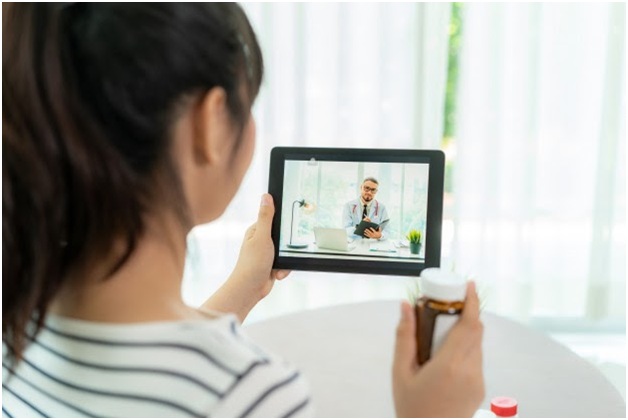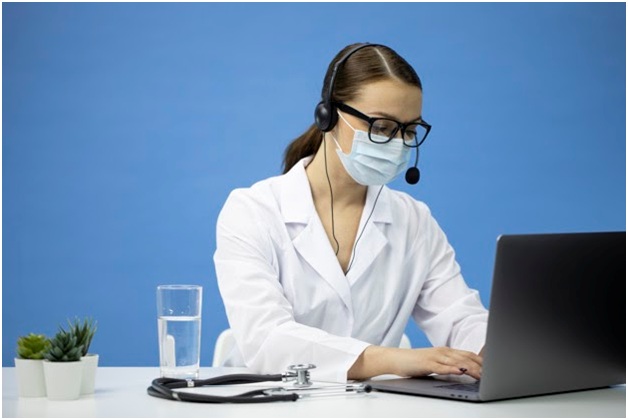Coronavirus has affected the lives of human beings considerably. The spread of the virus in the whole world has been so rapid that most of the attempts to control it have not yielded satisfactory results, with some of the major economies like the USA being affected harshly.
Now that hardly any place is showing a convincing report, the only precaution people are following is social distancing. Besides, in the USA, any kind of social gathering is also prohibited due to the rising number of positive cases every now and then.
This is because of the contagious nature of the virus, which also makes it worse for doctors and health professionals who are risking their lives while treating patients.
‘Flattening the curve’ program is introduced to check the spread of the virus. However, this too has shown nil result and the number of high-risk cases is at peak.
For instance, in the USA alone, the number of confirmed positive cases has crossed the mark of 2.3 million already by the third week of May and the rate of increment which at this time whirls around 10 thousand new positive cases per day is shrinking the space for any healthy recovery if the current medical infrastructure is not reformed immediately.
Despite so much effort, the inability to control the pandemic clearly directs professionals towards other means of suppressing the virus’ spread.
The realization that it is still not too late to shift the treatment to virtual care platforms, namely telehealth, wasn’t far from reaching the minds of health workers.
Telehealth can be described as the use of electronic information and telecommunication technologies to support health administration.
It helps patients, professionals, and clinics to deal with health-related issues. The various technologies used in the system include the internet, videoconferencing, wireless communication, and more.
The fact that it is one of the best virtual assisting systems makes it seem tailored for the present pandemic.
An insight into how telehealth works to slow-down the spread of COVID-19
When a person gets infected by COVID-19, he/she becomes the carrier of the deadly virus and thus poses a substantial risk to the professionals who would treat them.
The best thing one can do to control the spread is to stop being the carrier and distributor of the virus. The risk of the disease is especially high for old people, which is clear from the mortality rate of this age group.
This is due to the weak body immune system, and hence, people of lower age groups with compromised immunity are also at the same risk. However, with the help of virtual care, patients can have a safer approach towards the treatment.
Moreover, telehealth in corona pandemic will also help in lowering down the deployment of the number of medical equipment and health staff.
Telehealth in the corona pandemic will have a direct impact on the improvement of the service of clinics. Since the dawn of the virus’ advent in the USA, social distancing, and stay-at-home orders were prescribed to the people for their own safety.
In spite of that, the rate of the number of positive cases across the country has increased with each passing day.
Subsequently, the duly needed medical attention has been provided to these people in real-time. With time, reports of shortage in the number of beds, ventilators and other important equipment in the treatment centers started surfacing.
Although many people were cured by the professionals, the resources available at disposal are still falling short of what is needed.
Telehealth, in such cases, can help the healthcare clinics to overcome the limitations but it needs to be comprehensive. Although still in its early development phases, the future of telehealth is promising enough. It is noteworthy that the telemedicine market alone is expected to reach USD 17.14 Billion by 2026 in the USA, which is only a fraction of what the entire telehealth industry churns.
In other words, the medical practices and clinics dealing with such a contagious disease must be armed with a robust system that can facilitate the extension of telehealth services smoothly and efficiently.
Remote Patient Monitoring (RPM) is one such system that allows professionals to build a robust telehealth system. It is not merely availing healthcare services to patients at distant but encompasses a range of modern technologies for both the patient’s and doctors’ benefits.
Such a comprehensive solution is offered by HealthArc that provides clinics and practices with everything they need to facilitate telehealth.
The company even has high-quality FDA-approved devices and brings advanced communication tools, which altogether can help in building an efficient telehealth service providing platform.
Benefits of Remote Patient Monitoring
- Helps self-identifying the symptoms of noble coronavirus: It is no surprise that the present generation is relying on the internet for almost everything. Its speed and accuracy is something that makes people so attached and addicted to it. For the ones having the symptoms of COVID-19, RPM is also such a smart and accurate platform. With RPM, the concerned person can self-diagnose his health. The centers of health or clinics can use the same platform to confirm and proceed formally for the treatment. This can save much time and effort of the clinics and their workforce.
- Contain the risk of spread: A COVID-19 positive individual is admitted to a hospital or clinic, where patients suffering from other diseases are also being treated. With this, not only the resources and space of clinics are occupied but people in the surrounding also become more exposed to the risk. In such cases, RPM can eliminate the risk of throwing people at the risk of getting in proximity to contagious diseases.
- Benefits health professionals: In conventional patient management systems, the professionals are required to follow a lot of regimens if a patient reaches out to them. The patients are asked to wait outside the clinic during which the professional is diagnosing another patient and if positive, he/she has to ventilate the room before calling the next. However, with RPM, a clinic is freed from all the time-consuming efforts.
- No rebound effect: Flattening the curve approach could only play a small part in the case of the absence of telehealth since people are always curious to return to normal. This means that as soon as any person is treated from the disease, he goes back to his normal life, starts wandering everywhere and gets exposed to the risk yet again. However, an RPM system can stop such mishappenings by allowing the caretaker to supervise an individual’s activity even post-recovery.
RPM for professionals
Health professionals are the ones working on the edge of the risk of COVID-19. Almost every part of the country has reported the death of many such clinic staff due to the disease.
For them, RPM is the best platform to get in touch with the patients but remain safe simultaneously.
To limit the risk of getting affected, these professionals have every reason to use telehealth services by setting an RPM system.
One of the finely tailored RPM solutions is offered by HealthArc. The system has been provided with edge-cutting technology that allows every clinic and professional to keep a constant check on the needy.
Users can access the services of health professionals with the help of their smartphones. This not only helps the latter to serve better but also frees them from the risk of getting exposed to the disease.
Thus achieving a better disease management module is not impossible now, thanks to the virtual care assisting system provided by HealthArc. The conventional use of staff and clinic is modified, giving the healthcare professionals better scope towards flattening the COVID-19 curve.
Finally, with the advent of such RPM systems, one can formulate complete management for any disease with the utmost flexibility.
One of the best benefits of the platform is that it will help clinics to avoid mismanagement sprung out of the surge of patients all that by taking care of them remotely.
The only patients who would occupy the space in health centers are the ones with a higher risk of COVID-19 or in general, any other disease.




